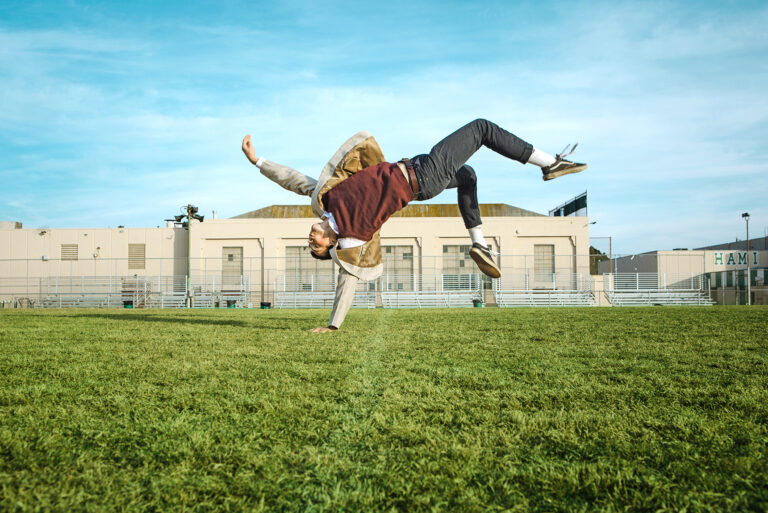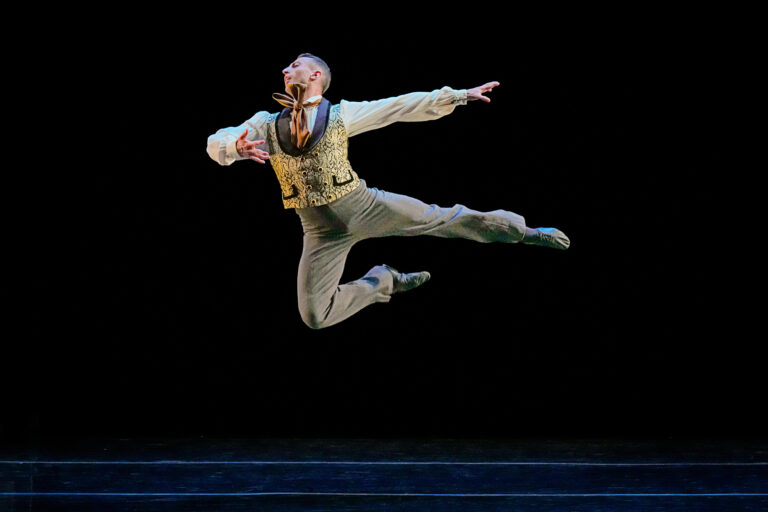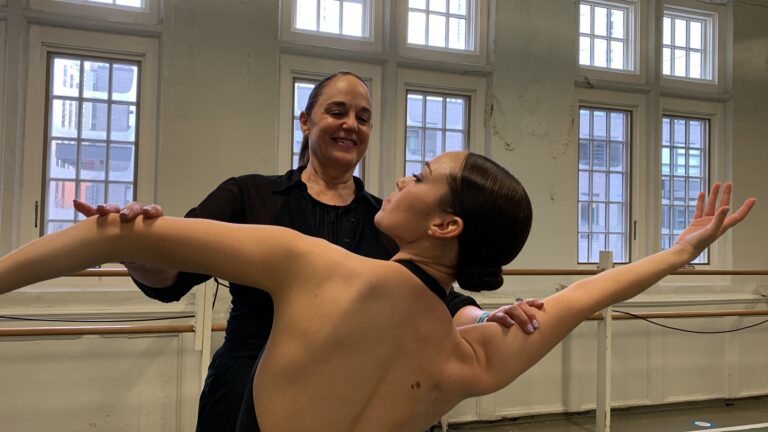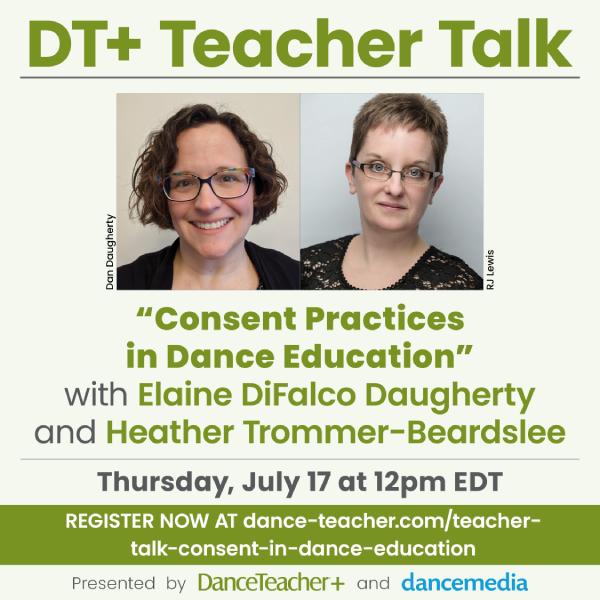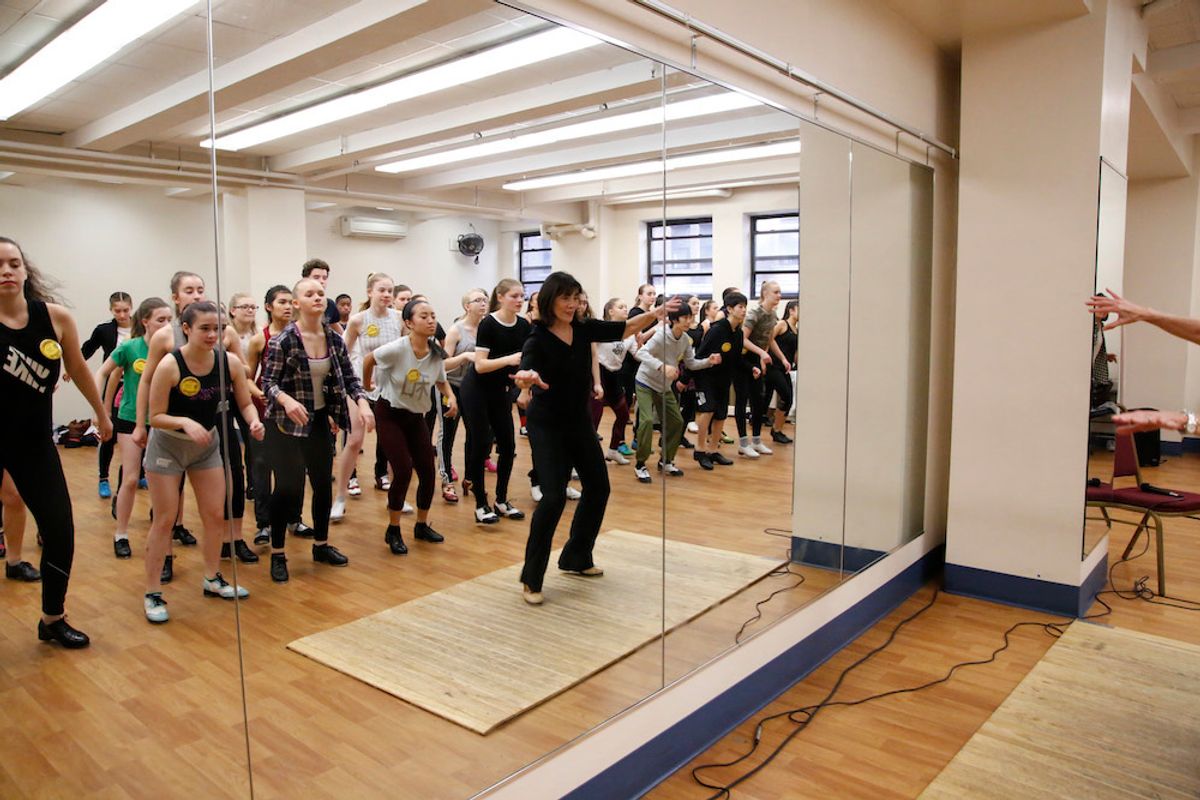
Debbi Dee took her first tap class at age 5 from vaudevillian hoofer and rhythm tapper Curly Fisher, in Rochester, New York. She studied tirelessly with him in the garage he had turned into a small, makeshift dance studio until she was 13 years old, when he claimed he had taken her as far as he could, and she needed to find herself a new teacher. Instead, she jumped feet first into her professional career, tapping with the Lawrence Welk and Count Basie orchestras on the traveling state fair circuit, on the Bob Hope USO shows, and in nightclubs in Vegas and the Catskills.
“That’s where I got my name,” she says. “Before, I was Debra Ann Maria Donofrio. Lawrence Welk couldn’t pronounce my last name, so he said, ‘Your first name starts with D, and your last name starts with D. Let’s call you Debbi Dee.”
For the past 50 years, Dee has taught at a range of conventions, including Dance Masters of America, and as a guest artist at private studios around the country. She is known for her ability to separate the tap to get all the different sounds from it. “The funny thing is, I didn’t know what a shuffle was until I was in my 20s,” she says. “I was taught through scatting, and then would transfer the sound to my feet. I wouldn’t change the way I learned, because it gave me tremendous musicality. I learned that tap is playing an instrument, and that instrument goes into the piece of music.”
Now based in Boynton Beach, Florida, Dee has earned recognition as a teacher’s teacher. “What tap teachers need to understand when creating a syllabus is they’re teaching to the age and abilities of the entire group, not just the particularly talented few,” Dee says. “Don’t overextend them. Your students are choosing to do this, so make it an enjoyable, fun experience. Don’t expect too much too fast. I like to take my time and allow the class to grow together.”
Most-used tap shoes. “I used to wear my own Debbi Dee Tap Shoe while it was on the market, but I’ve been wearing Miller & Ben Tap Shoes for a while now.”
Go-to teaching aids. “I like my students to have a copy of their warm-up and rudiment music in class. I also have a copy of The Debbi Dee Technique ‘Tap’ [a blown-up picture of the tap divided into parts] that hangs in the studio, so that they learn how to play their instrument when they are tapping.”
Favorite tap dancers of all time. “Eleanor Powell, Gene Kelly, Nicholas Brothers and Fred Astaire are simply the best.”
Life-changing books. “I recommend Beverly Fletcher’s TapWorks; The Tap Dance Dictionary, by Mark Knowles; Tap, by Rusty Frank; and Tap Dancing America, by Constance Valis Hill. They’re all so well-written and thought-out, and some of them even include some great history of tap steps.”
Videos. Debbi Dee’s own series of 25 educational DVDs includes Tap Tradition: The Theory and Tappin Time Steps. (debbidee.com)


